Abstract
STUDY OBJECTIVES: To evaluate the reliability of data supplied in a case-control study by proxy respondents for cases who were too ill to do so themselves. DESIGN: A hospital based, case-control study of the current use of oral contraceptives (OC) and cardiovascular diseases. Data from "true" controls matched to a subset of cases were compared with those supplied by proxy respondents about the true controls. SETTING: Hospitals in 21 centres from Africa, Asia, Europe, and Latin America. PATIENTS AND PARTICIPANTS: For a subset of cases, 403 pairs of controls-one "true" and one proxy-were interviewed. "True" controls were matched by age, place, and time of admission and were admitted with 1 of 27 permissible diagnoses not associated with OC use. Proxy controls were either relatives or friends of true controls. MAIN RESULTS: Levels of concordance between data from proxy and true controls were high for most variables regarding recent events, including current OC use, but were greatly diminished when detailed information, particularly from the past, was required. Husbands were usually the best proxy, although this was question-specific. The sensitivity and specificity of proxy responses were 93% (95% confidence intervals: 77%, 99%) and 100% (98%, 100%) respectively, for current use of OC. Assuming the misclassification of current OC use by proxy cases is similar to that produced by proxy controls, the estimated impact of using proxy data on risk estimates associated with current OC use was to bias the overall estimate of risk of stroke by less than 3% and the risks of both acute myocardial infarction and venous thromboembolism by less than 1%. CONCLUSIONS: Friends or relatives, and particularly husbands, provided reliable information when used as proxy respondents for young women. The estimated impact of misclassification by proxy respondents on overall risk estimates in the WHO collaborative study was less than that which would have arisen if information from proxy respondents had not been used.
Full text
PDF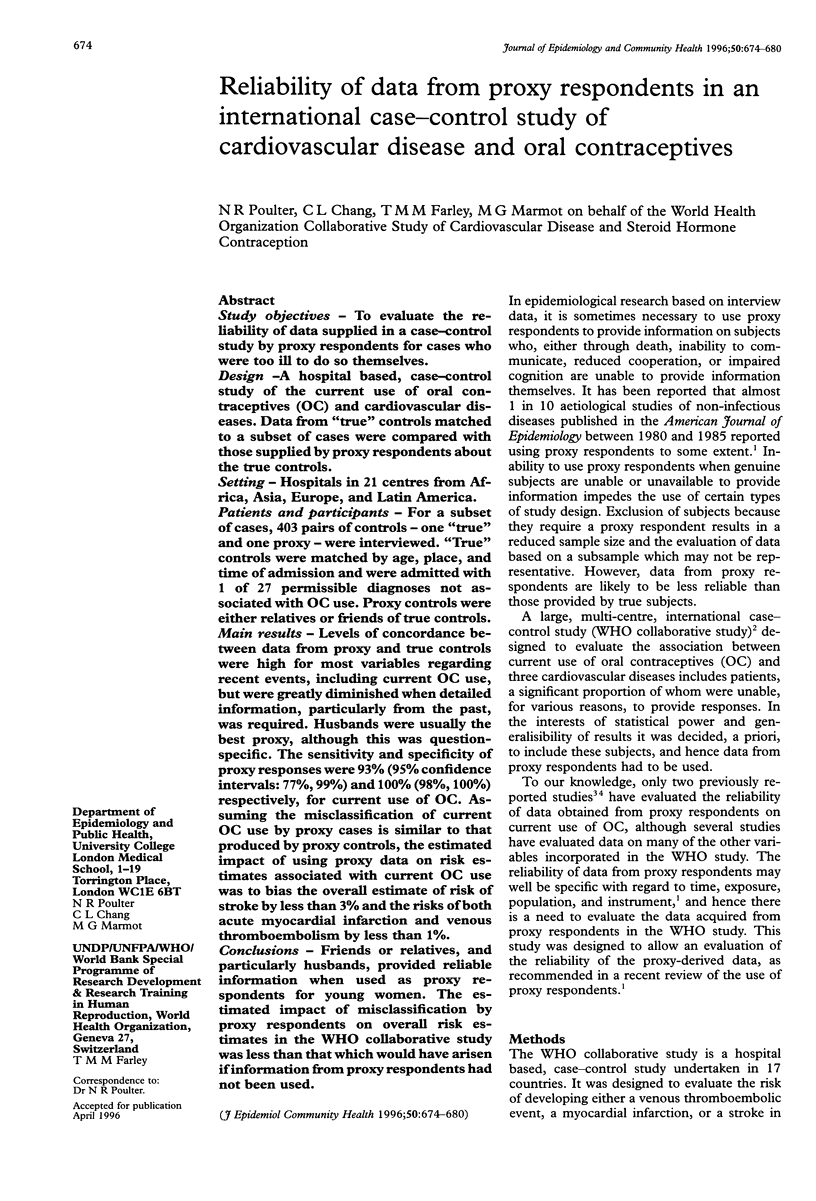
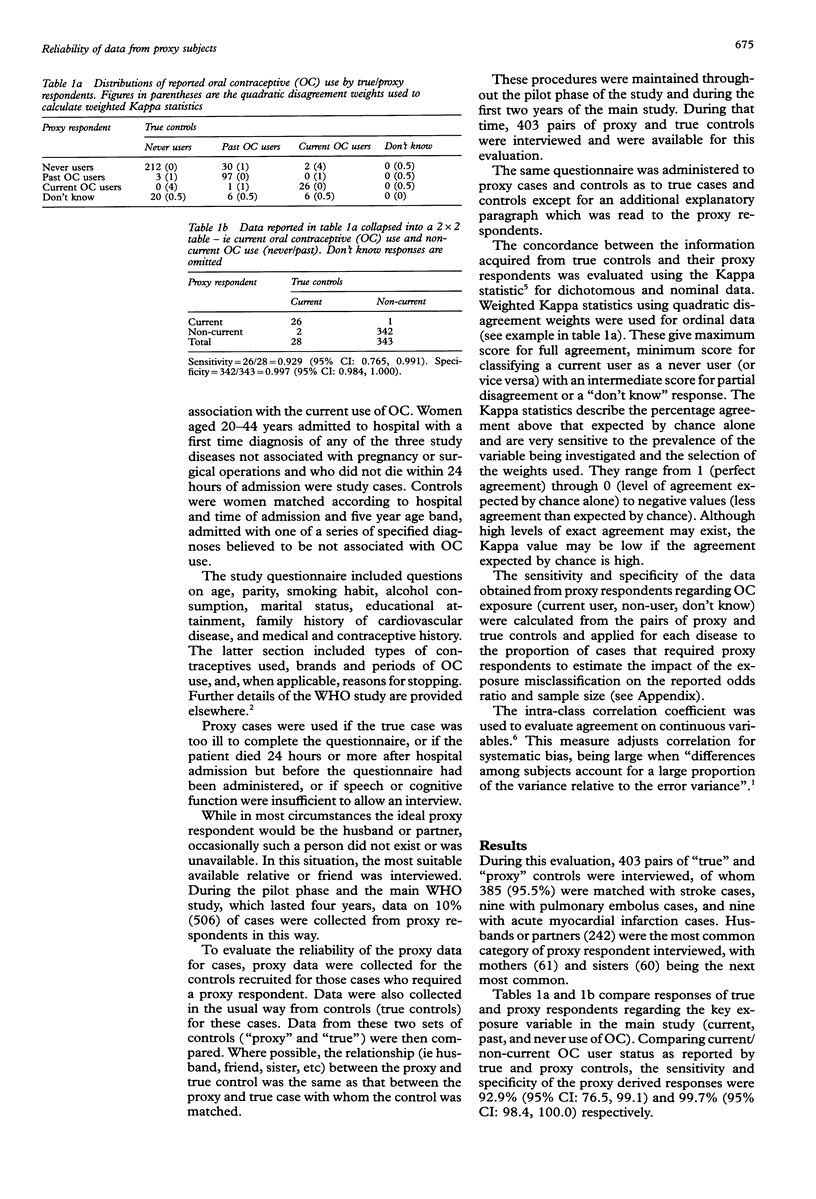
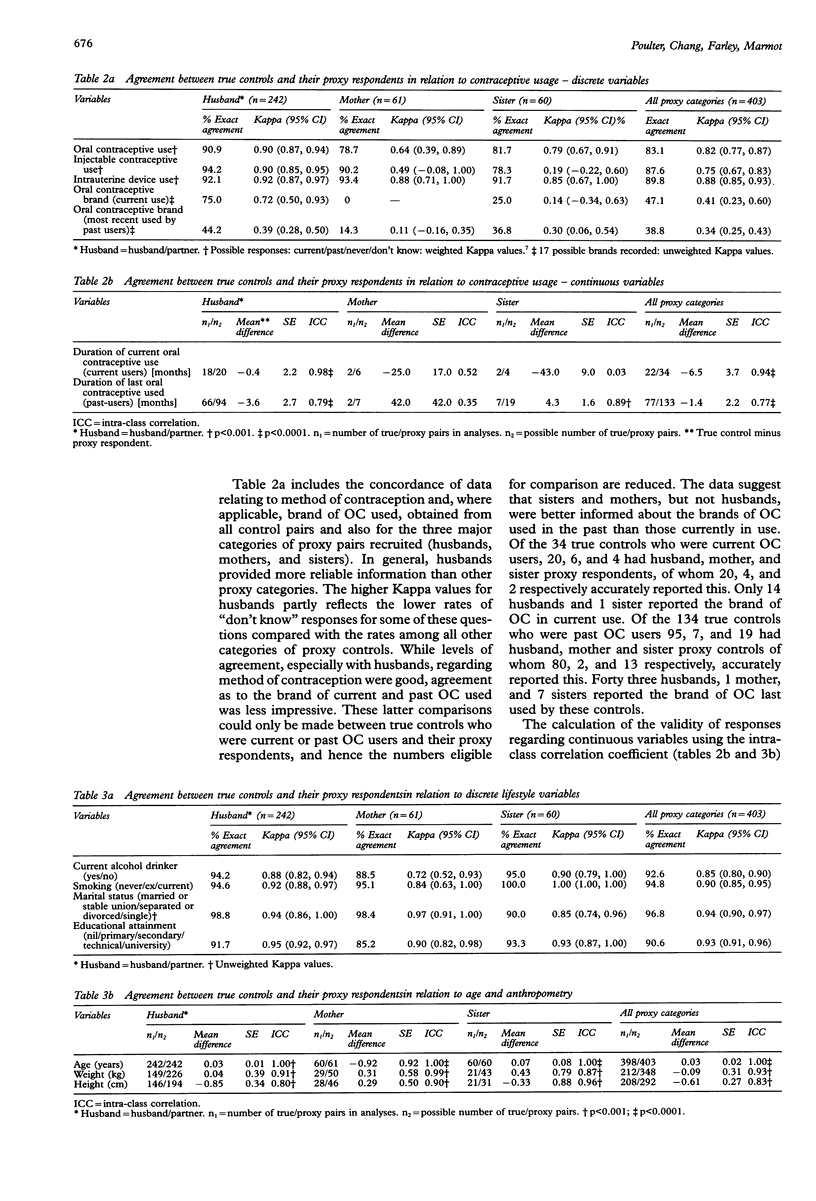
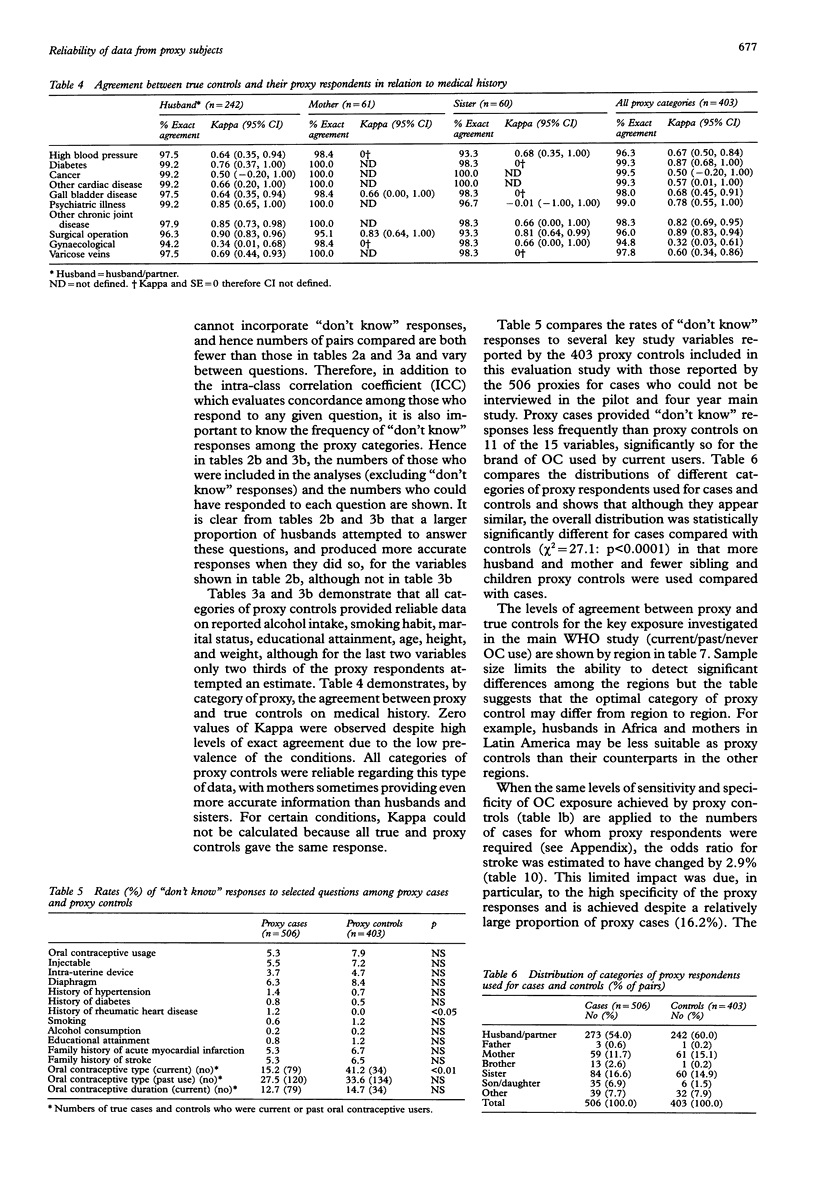
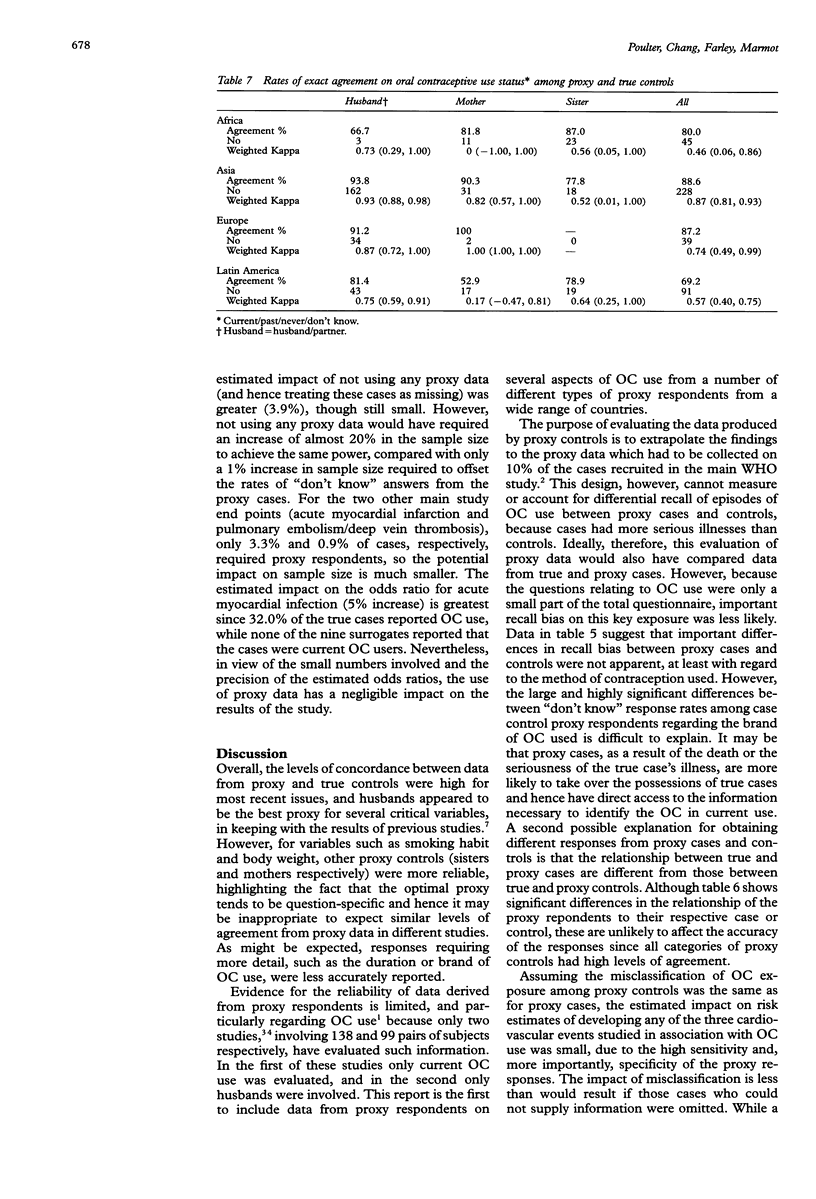
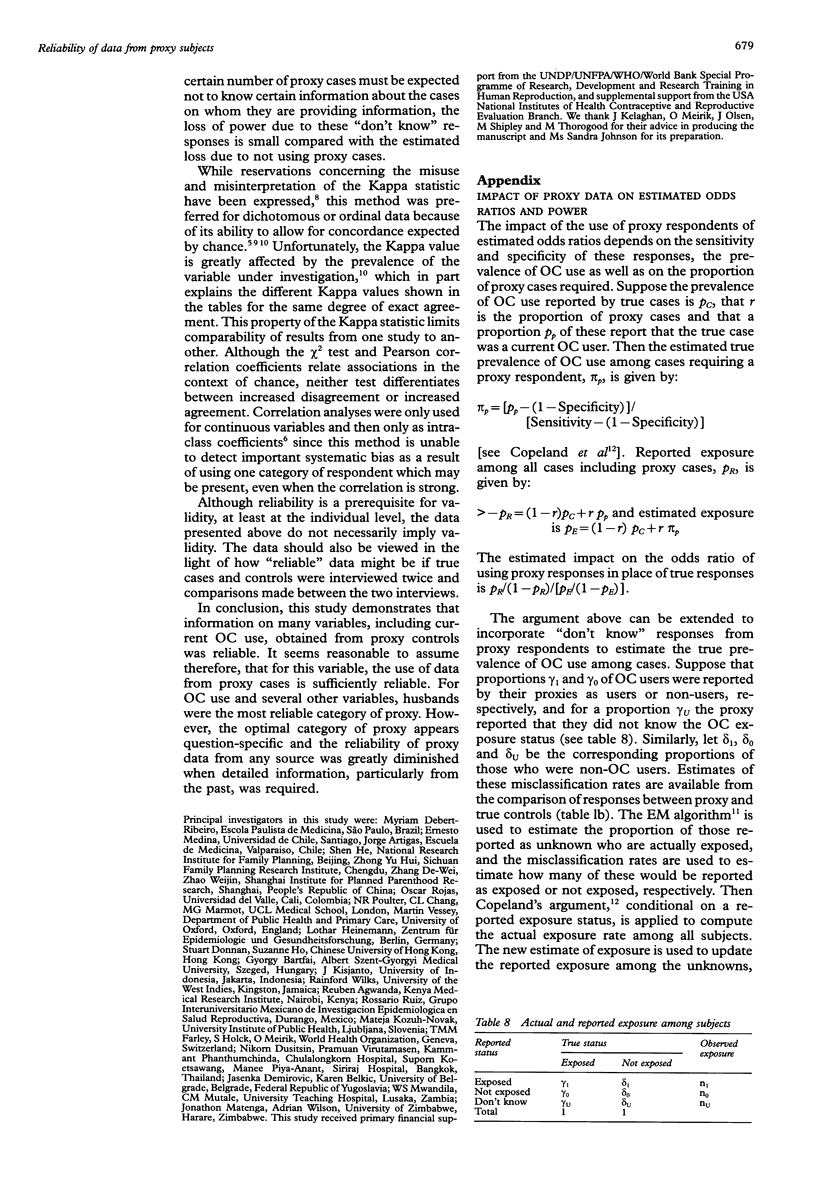
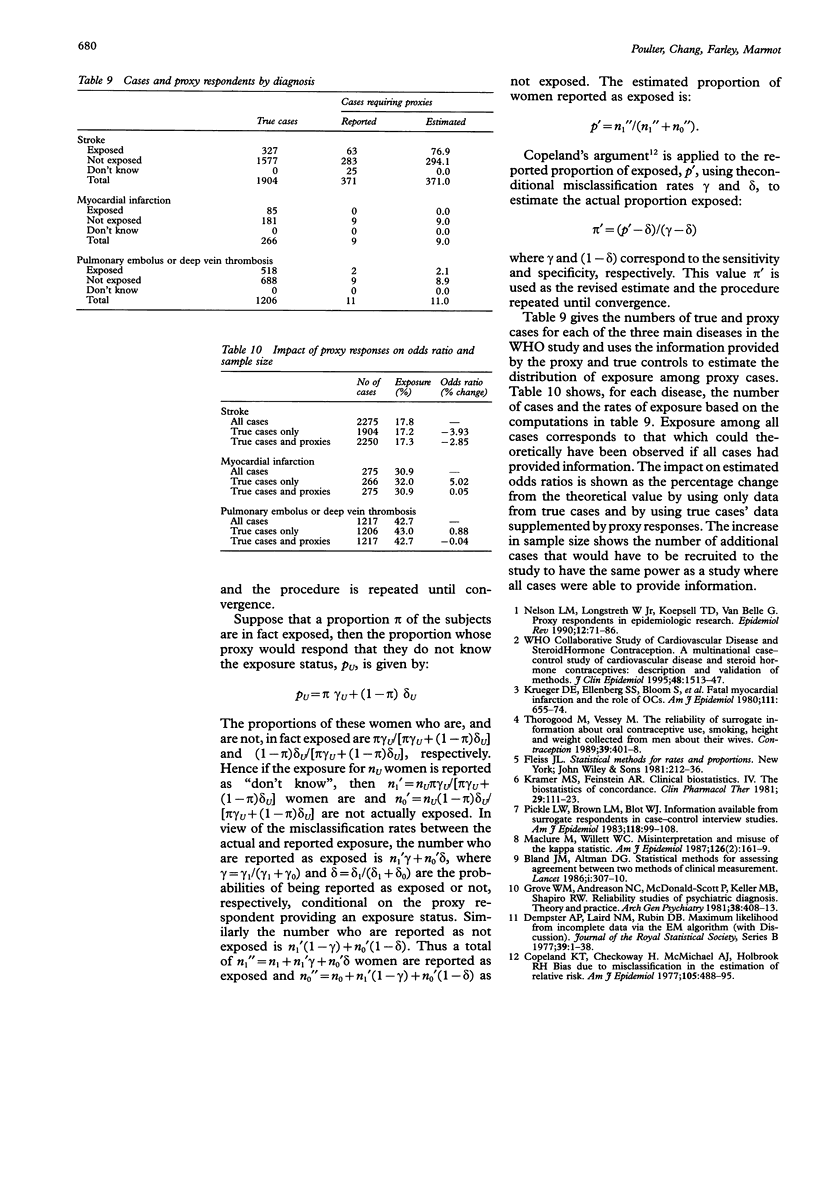
Selected References
These references are in PubMed. This may not be the complete list of references from this article.
- Bland J. M., Altman D. G. Statistical methods for assessing agreement between two methods of clinical measurement. Lancet. 1986 Feb 8;1(8476):307–310. [PubMed] [Google Scholar]
- Copeland K. T., Checkoway H., McMichael A. J., Holbrook R. H. Bias due to misclassification in the estimation of relative risk. Am J Epidemiol. 1977 May;105(5):488–495. doi: 10.1093/oxfordjournals.aje.a112408. [DOI] [PubMed] [Google Scholar]
- Kramer M. S., Feinstein A. R. Clinical biostatistics. LIV. The biostatistics of concordance. Clin Pharmacol Ther. 1981 Jan;29(1):111–123. doi: 10.1038/clpt.1981.18. [DOI] [PubMed] [Google Scholar]
- Maclure M., Willett W. C. Misinterpretation and misuse of the kappa statistic. Am J Epidemiol. 1987 Aug;126(2):161–169. doi: 10.1093/aje/126.2.161. [DOI] [PubMed] [Google Scholar]
- Nelson L. M., Longstreth W. T., Jr, Koepsell T. D., van Belle G. Proxy respondents in epidemiologic research. Epidemiol Rev. 1990;12:71–86. doi: 10.1093/oxfordjournals.epirev.a036063. [DOI] [PubMed] [Google Scholar]
- Pickle L. W., Brown L. M., Blot W. J. Information available from surrogate respondents in case-control interview studies. Am J Epidemiol. 1983 Jul;118(1):99–108. doi: 10.1093/oxfordjournals.aje.a113621. [DOI] [PubMed] [Google Scholar]
- Thorogood M., Vessey M. The reliability of surrogate information about oral contraceptive use, smoking, height and weight collected from men about their wives. Contraception. 1989 Apr;39(4):401–408. doi: 10.1016/0010-7824(89)90118-2. [DOI] [PubMed] [Google Scholar]


